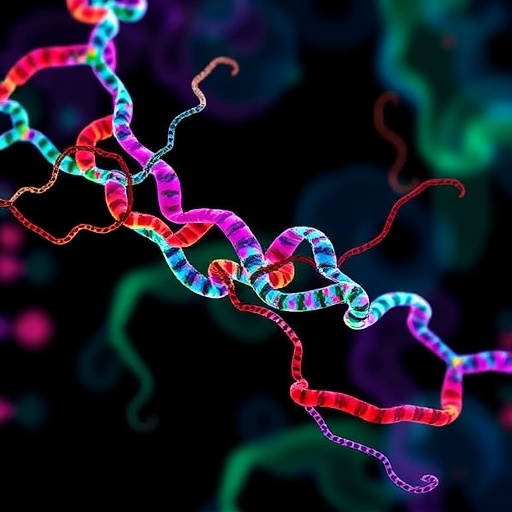In an exciting breakthrough for cardiovascular research, a team of scientists led by Kumawat and colleagues has unveiled profound molecular insights into the rescue mechanism of a novel HERG activator that addresses severe mutations associated with Long QT Syndrome Type 2 (LQT2). This pivotal study, published in the Journal of Biomedical Science, signals a significant stride towards understanding and potentially mitigating the life-threatening effects of arrhythmias stemming from genetic mutations in cardiac ion channels.
Long QT Syndrome, a condition characterized by prolonged cardiac repolarization, poses a substantial threat to patients who experience arrhythmic events that can lead to syncope or even sudden cardiac death. LQT2, specifically linked to mutations in the KCNH2 gene encoding the HERG (human ether-a-go-go-related gene) potassium channel, affects a patient’s ability to manage electrical impulses in the heart. As these mutations can lead to severe manifestations, therapeutic strategies targeting the underlying molecular defects become critically important.
Kumawat’s research dives deep into the molecular dynamics of HERG activators, focusing on how they can restore normal functionality in the presence of disruptive LQT2 mutations. The innovative approach taken in this study emphasizes a structure-function relationship method that elucidates the compensatory mechanisms that these activators employ when faced with genetic impairment. By understanding these interactions at the molecular level, researchers can develop more effective pharmacological interventions for patients suffering from this serious cardiac disorder.
The findings reveal that the HERG activator can effectively enhance channel activity and regain repolarization capabilities that are otherwise compromised by deleterious mutations. This study utilized in vitro and in vivo model systems, bridging the gap between laboratory research and potential clinical applications. The activation of HERG channels in the presence of specific LQT2 mutations demonstrates how therapeutic agents might counteract the malfunction of ion channels, providing fruitful avenues for future studies.
Additionally, the research incorporated sophisticated biophysical techniques to assess the activation and gating properties of mutated HERG channels when exposed to the HERG activator. Through detailed characterization, the team was able to identify key molecular interactions that underlie the positive modulation of HERG channel activity, revealing how subtle changes in structure can lead to remarkable functional recovery. Such advances highlight the critical nature of precision medicine, where tailored therapies can significantly improve patient outcomes.
The discovery of this novel HERG activator is timely, given the growing prevalence of genetic testing for patients at risk of arrhythmic syndromes. As awareness increases surrounding the implications of inherited cardiac conditions, this research stands to empower healthcare providers with improved treatment options. The prospect of managing LQT2 through targeted pharmacological therapy offers hope to many families affected by this condition.
Moreover, the therapeutic efficacy showcased through this study implies that these HERG activators could hold promise beyond LQT2, potentially paving the way for novel treatments for other ion channel-related disorders. Researchers are optimistic about the insights gained from the molecular mechanisms explored, as they could serve as a blueprint for designing specific activators for additional ion channels implicated in different arrhythmogenic disorders.
The implications of this research extend into the realm of drug development as well. Understanding how to manipulate ion channel activity at the molecular level offers drug developers a roadmap to design more effective and safer therapies. By addressing regulatory mechanisms, researchers can optimize drug performance, minimize side effects, and improve the quality of life for patients suffering from chronic cardiac conditions.
Kumawat and colleagues are now tasked with the future exploration of this HERG activator’s clinical potential, extending their studies to larger cohorts to validate efficacy and safety in humans. The team anticipates that further investigation will substantiate the favorable outcomes observed in their preliminary models, ultimately leading to clinical trials. This will be an essential step in translating their laboratory findings into real-world therapeutic applications.
As this groundbreaking research captures the attention of the scientific community, it also emphasizes the essential collaboration between molecular biology, pharmacology, and cardiology. The integration of diverse fields of research has proven pivotal in the journey to unveil new treatments for complex medical conditions. Furthermore, this research showcases the need for continuous exploration and innovation in a field that holds the potential to save lives through the advancement of cardiac care.
In summary, Kumawat et al. had taken significant leaps forward in understanding the rescue mechanisms of HERG activators against severe LQT2 mutations. Their comprehensive research lays a solid foundation for further studies that can transform the therapeutic landscape for patients afflicted by this form of Long QT Syndrome. The quest for enhanced ion channel therapies is not only a triumph of scientific inquiry, but it also exemplifies the resilience and hope of the medical community as they strive to conquer complex cardiovascular challenges.
Subject of Research: Molecular insights into HERG activator mechanisms for severe LQT2 mutations.
Article Title: Molecular insights into the rescue mechanism of an HERG activator against severe LQT2 mutations.
Article References:
Kumawat, A., Tavazzani, E., Lentini, G. et al. Molecular insights into the rescue mechanism of an HERG activator against severe LQT2 mutations.
J Biomed Sci 32, 40 (2025). https://doi.org/10.1186/s12929-025-01134-w
Image Credits: AI Generated
DOI: 10.1186/s12929-025-01134-w
Keywords: Long QT Syndrome, HERG activator, LQT2 mutations, ion channels, cardiac arrhythmias, molecular dynamics, pharmacological intervention.




